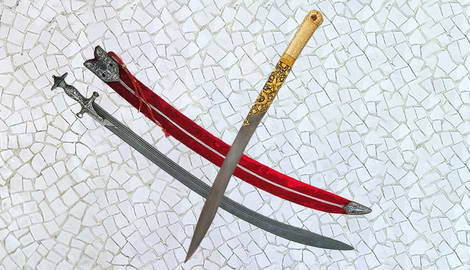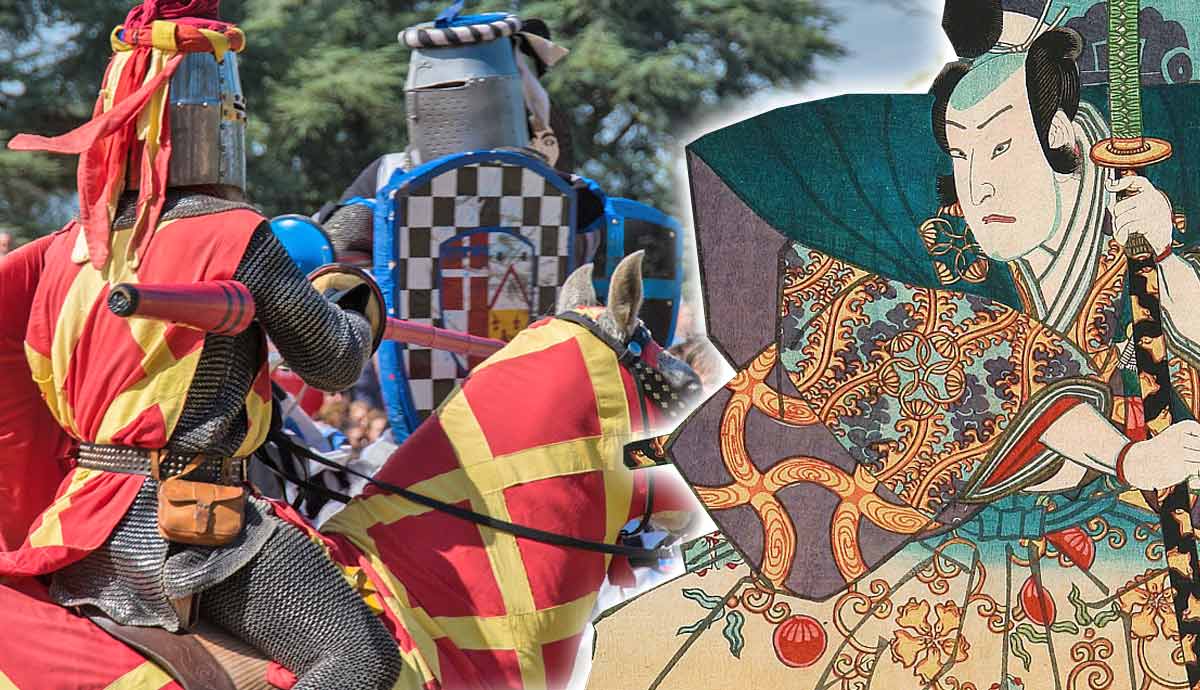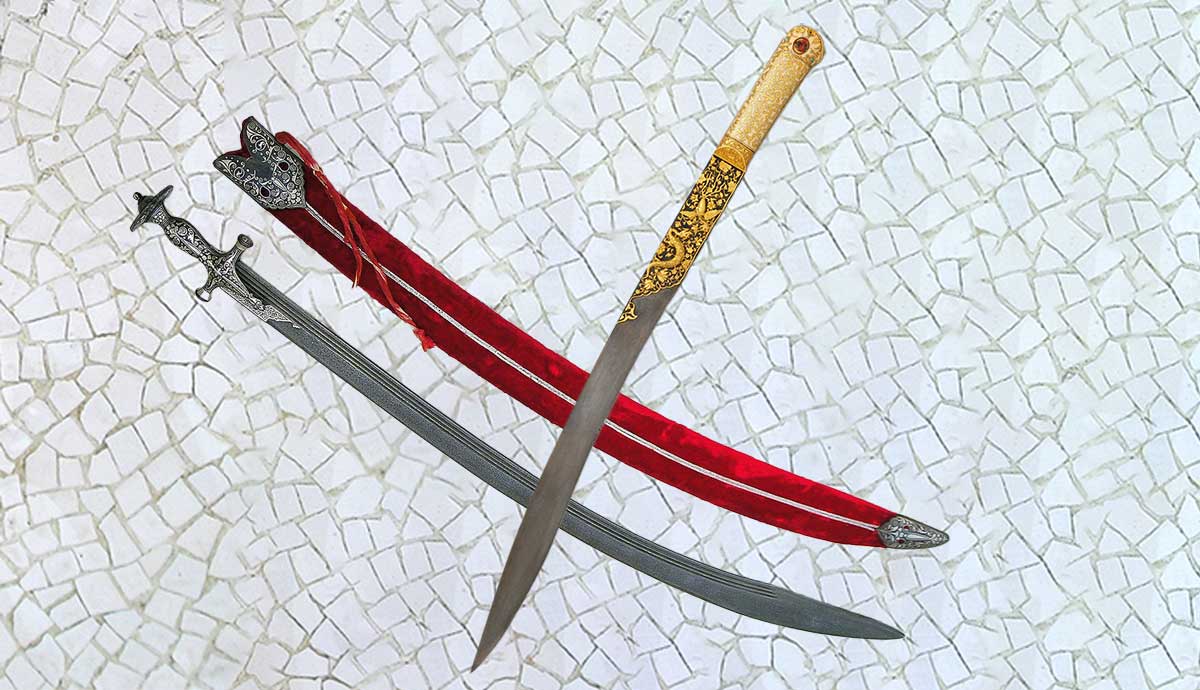
As solid a sword as the katana is (it would not have been used for nearly 800 years otherwise), it does have weaknesses which we’ve covered elsewhere. It is also considered to be a work of art. However, many other countries have produced excellent swords of their own that are worthy of recognition. What we’re looking at specifically are curved swords, some of which can be mapped onto the Elmslie single-edged blade typology, a complement to the Oakeshott typology that categorizes straight double-edged swords. For now, let’s leave Japan behind, journey to the west, and look at some swords from the rest of the world.
Changdao (China)
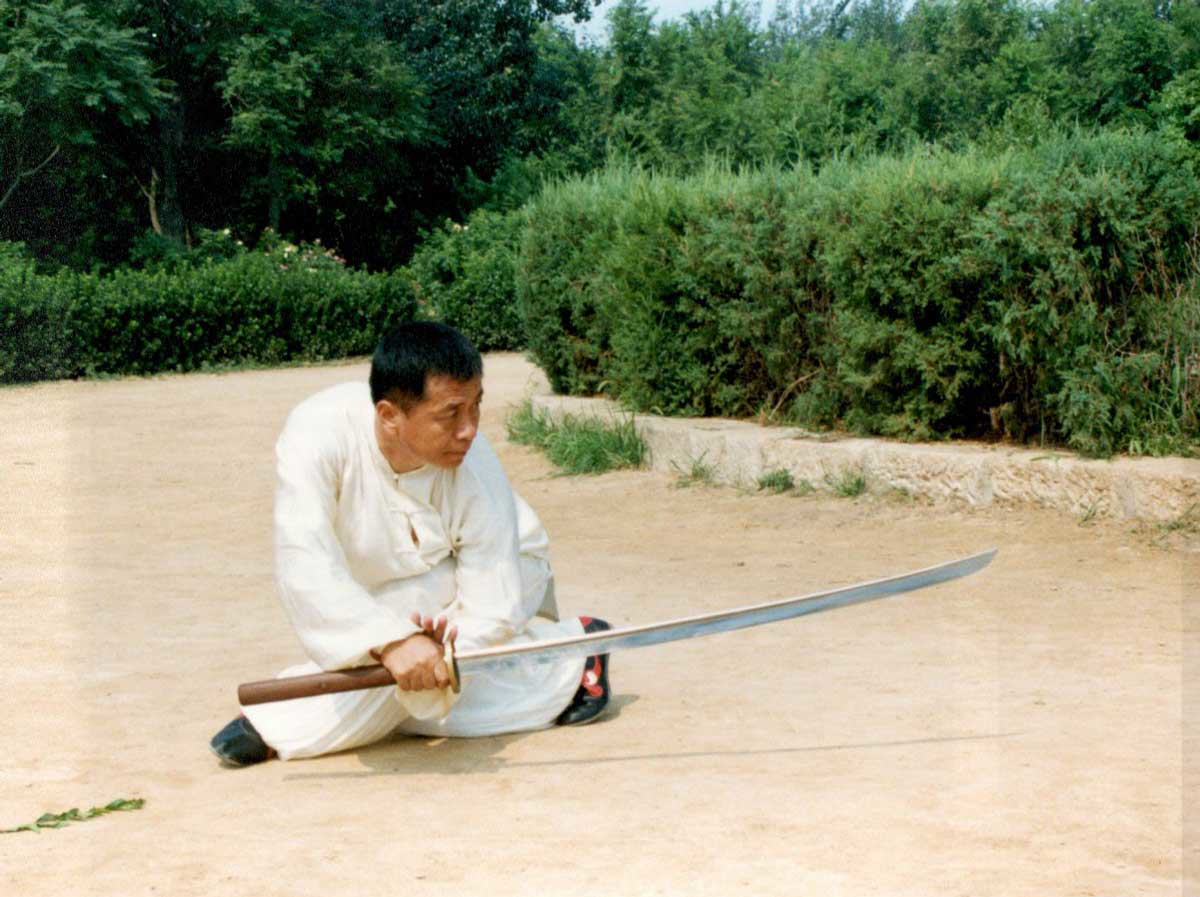
The dao, the archetypical single-edged curved sword of Chinese fencing, takes many forms. Most of them are one-handed, but the changdao is one of the rare two-handed variants. Its blade is slightly longer than that of the katana, but it is shaped almost identically to it, otherwise, to the point that it is easy to mistake the two at a glance.
Because many Japanese swords were exported to other countries throughout East and Southeast Asia, the changdao could have potentially been influenced by the design of the katana and similar weapons like the no-dachi.
The changdao originally appeared in the Tang Dynasty, referring to an extremely large anti-cavalry sword. It fell out of favor during the Yuan Dynasty, but reemerged during the Ming Dynasty, where it saw use during wokou raids from Japanese pirates. Many of these were ronin who, in the absence of a lord to serve and thus no other income, turned to banditry.
As China experienced a surge of nationalist-inspired martial arts training during the early 1900s, the military adopted older weapons for melee fighting, renaming the chángdào in particular to the miaodao.
Talwar (India)
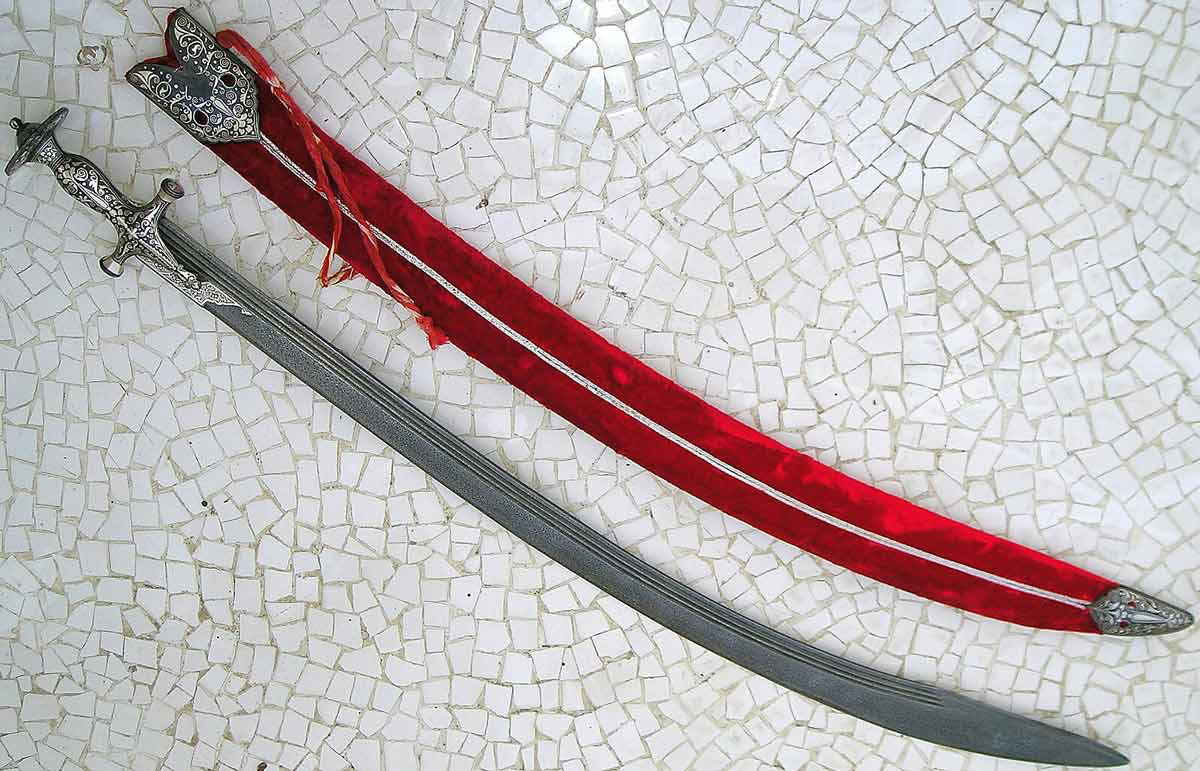
The talwar, also spelled tulwar, originates from India during the period of the Mughal Empire, roughly contemporary with the Edo Period of Japan. At first glance, one will notice the talwar to have a distinct curve, more so than Japanese blades. This shape makes the talwar utterly ineffective for thrusting, so instead it exclusively requires draw-cutting techniques. It is a single-handed weapon with an intricately-shaped hilt made to perfectly fit the contours of the hand when held in a proper grip.
The talwar has a wider blade profile toward the tip of the blade, giving it more momentum when swung at speed. Sometimes, this portion of the blade held a false edge, or the edge on the spine of the blade.
The hilt of the talwar was made entirely of metal, with the crossguard integrated as a single piece. The extra weight helped to balance the sword, because otherwise it would be too heavy and unwieldy. Rather than a round or bell-shaped pommel, the talwar includes a wide disc-shaped pommel that forces the user to maintain the sword in optimal cutting position. Some also have sharpened spikes, making for a deadly punching weapon.
Shamshir (Persia)

The shamshir, meaning “curved like the lion’s fang,” is one of the most recognizable swords from Persia. Along with similar swords from the Arabian Peninsula, Europe was exposed to it during the Crusades as the weapon of Saracen infantry and cavalry. The word was anglicized into “scimitar,” which is mistakenly used to describe all curved swords from the SWANA (Southwest Asia/North Africa) region. It has a deep curve, even more pronounced than that of the talwar, and is a single-handed weapon. Its pommel was often hooked; this design helped a swordsman keep a tight grip on his weapon when galloping on horseback.
The shamshir appeared starting around the 13th century. Its design was possibly influenced by the Turko-Mongol sabers that were predominant in the region, at least in its currently recognizable form. Because of the abundance of trade through the area and around the Silk Road, the shamshir influenced similar swords, including the saif, talwar, pulwar, and others.
Yataghan (Turkey)
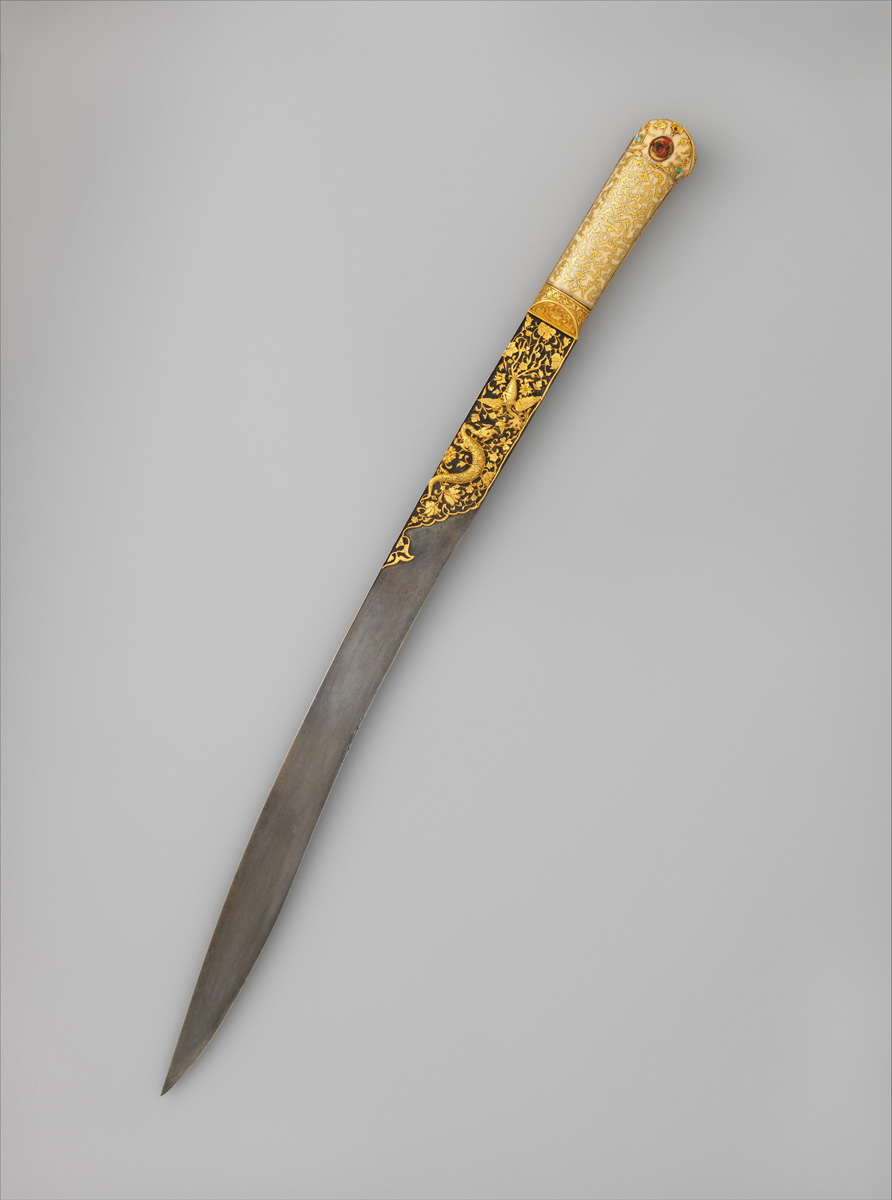
The yataghan, a sword used in 15th-century Ottoman Turkey, is another well-known weapon. It is a one-handed blade, almost like a machete. Its shape and blade profile give some critical differences to the other swords we’ve listed. For example, the yataghan has a slight forward curve, which affects the balance and weight distribution of the weapon. Rather than its use focusing on draw cuts like other curved swords, it employs more of a chopping or hewing motion to deliver blows, though its edge can still slice. Some versions of the yataghan were forged with an S-shaped curve that pointed forward at the base and back toward the tip. This unorthodox shape, almost like the Egyptian khopesh, allowed it to be used to hook around an enemy’s sword or thrust inside their guard.
Most of the time, the yataghan was not fitted with a handguard to allow the user to have more flexibility in the wrist. Because the weapon was single-handed, it was often paired with a shield, which made it less important to have a dedicated handguard and instead let the shield or armor do most of the work of defense.
Originally, the yataghan was thought to be derived from a sort of utility knife like the machete, but it became the standard sidearm of the Janissaries, the elite guards and infantry of the Ottoman sultanate. Their main weapon would have been the earliest muskets during the 16th century.
Messer (Germany)

Although the longsword holds the distinction of being one of the most well-known weapons of medieval Germany, the messer is perhaps a close second. This is a single-handed blade with a full-width tang and a crossguard with a metal bar called the nagel (nail) protruding out to protect the knuckles. The messer was almost always paired with a buckler in the off-hand.
A common misconception holds that the messer was specifically created as a weapon that peasants could carry to circumvent laws against owning swords, but it was more likely that knifemaking guilds were taking advantage of the laws about what was classified as a sword to compete with swordsmithing guilds. For a blade to be classified as a sword, its tang had to be fully covered.
The Kriegsmesser, literally “war knife” pictured above, is a messer scaled up to two-handed sword length. Unlike most instances of the messer, it saw use as a dedicated military weapon, often in the hands of Landsknecht mercenaries in the 15th and 16th centuries. Many techniques that existed in longsword fighting systems translate easily to the kriegsmesser.
Falchion (France)
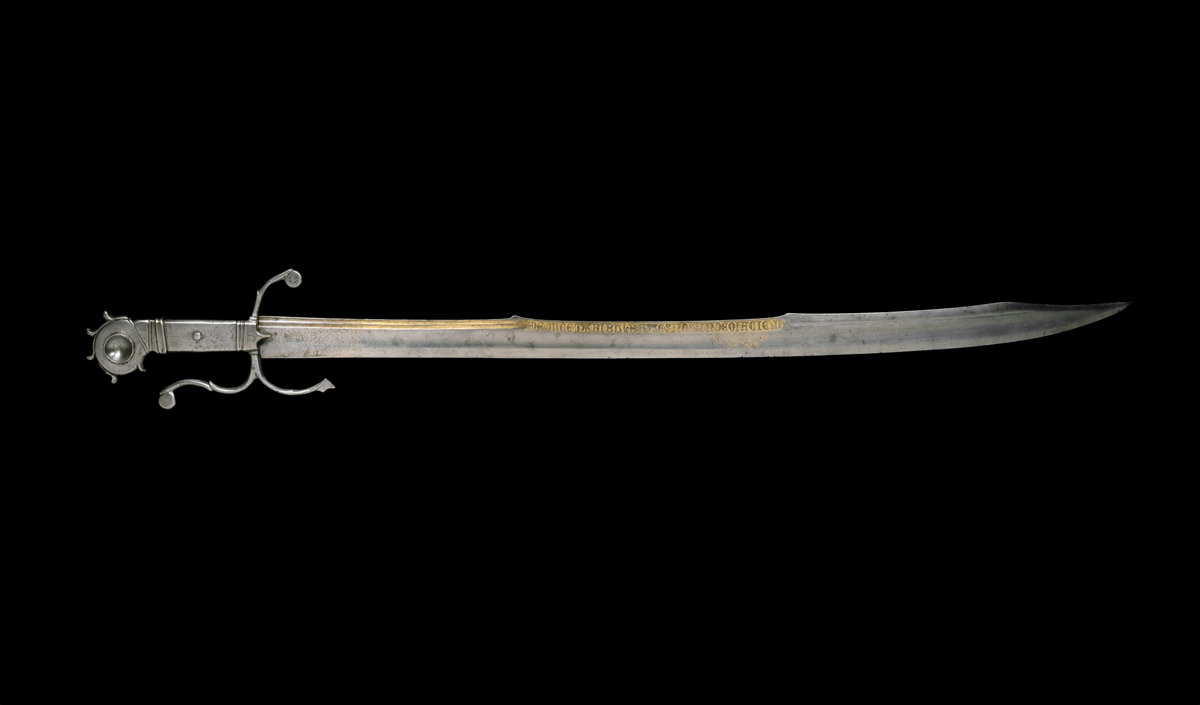
The falchion, derived from the Dacian falx, is a single-handed sword from medieval France that spread throughout Europe from the 13th through the 15th centuries. Light cavalry soldiers would frequently use the falchion, though it also expanded to the ranks of infantry who might have been too poor to afford a larger sword. In feudal societies, soldiers were expected to buy their own equipment, so they had to make do with what they could afford based on land income from peasants.
As with the messer, some swordsmiths would add a short false edge at the tip. Earlier versions of the falchion have wider blades that make the sword look more like a cleaver. The lighter, thinner blades that came later made it possible to penetrate mail with the narrow point going through the rings.
Like most swords, this weapon was used against lightly-armored or unarmored foes. It has a straighter profile than some of the other swords we’ve listed here, allowing the swordsman to use a variety of cut-and-thrust techniques. Even though the falchion makes appearances in art, few surviving examples have as yet been found.
Cutlass (Nautical)
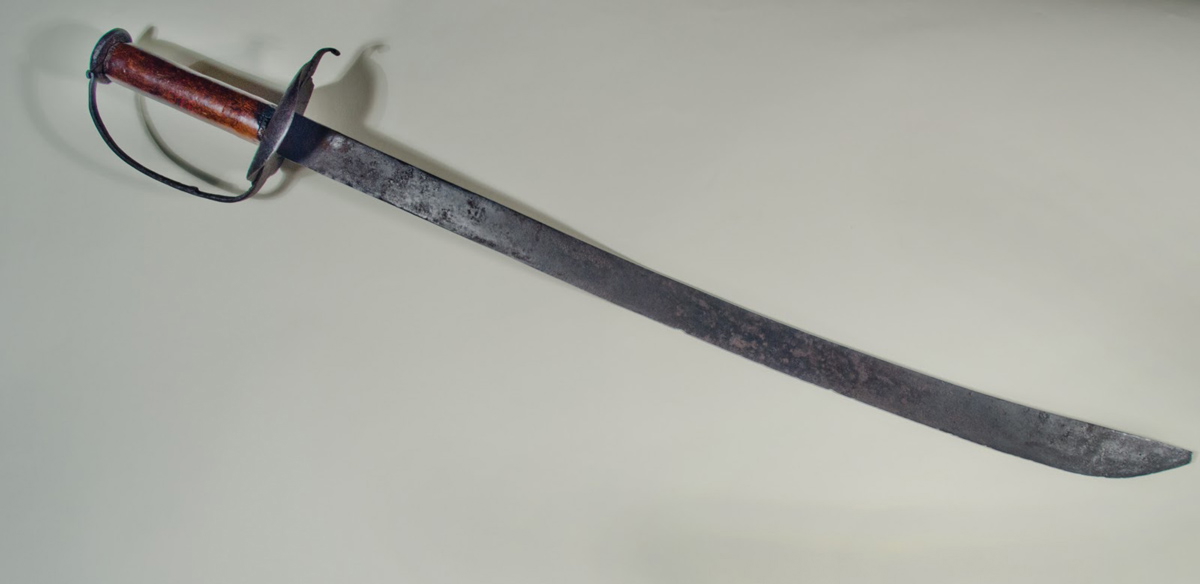
The cutlass, a broad, short, curved sword, saw most of its use aboard ships throughout most of Europe’s history. Whether it was for naval battles between enemy countries or a merchant ship defending itself against pirates, sword-to-sword fighting would happen in tight spaces. A short blade works best in this environment. The cutlass was fitted with a wrap-around guard that offered hand protection and grip security; the pitching motion of a ship at sea and the inherent chaos of armed combat dramatically increased the possibility of dropping one’s sword or having it thrown overboard.
The design of the cutlass draws inspiration from earlier swords, including the falchion and the messer. The thick, broad blade worked well, not only for fighting in close quarters, but also in cutting things like rope and canvas, which make up the rigging and sails of a ship, and thick vegetation on land. Whenever sailors landed on an island to restock supplies like wood, they would need to be able to carve through treacherous terrain. Part of this last use is thought to have influenced the modern machete.
You may wonder why our list does not extend to the Americas. Although the culture and technology of the indigenous people in pre-Columbian America were far more advanced than is taught in many public schools, they never developed ironworking for use in utilitarian weapons like the Eurasian landmass did. The natural resources at hand had shown to be adequate to their needs, and they did not have access to coal or anything that would create a hot enough temperature to work iron. After European contact with the Americas, metal tools and weapons were introduced.
